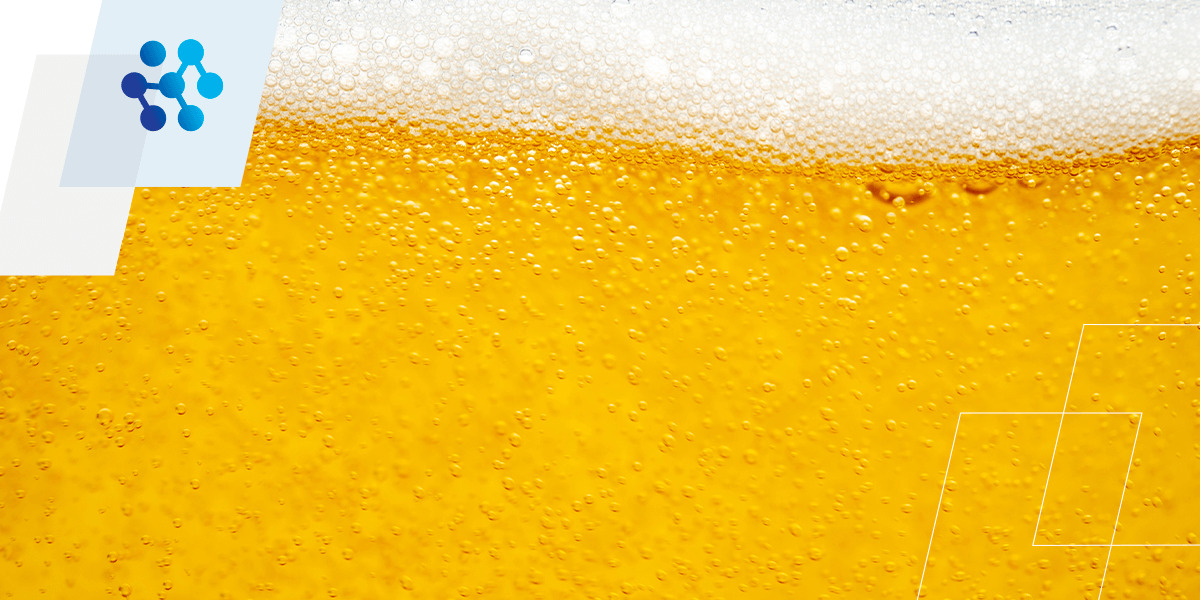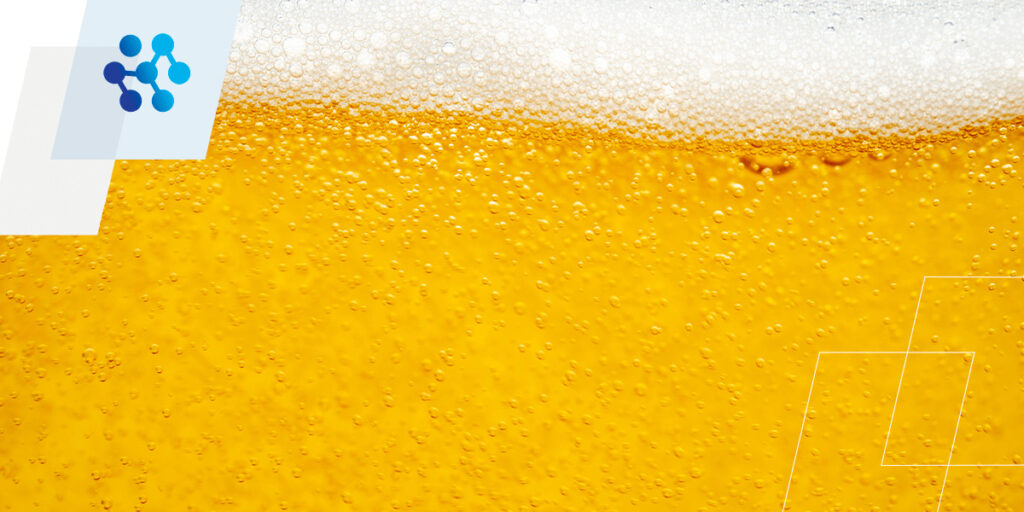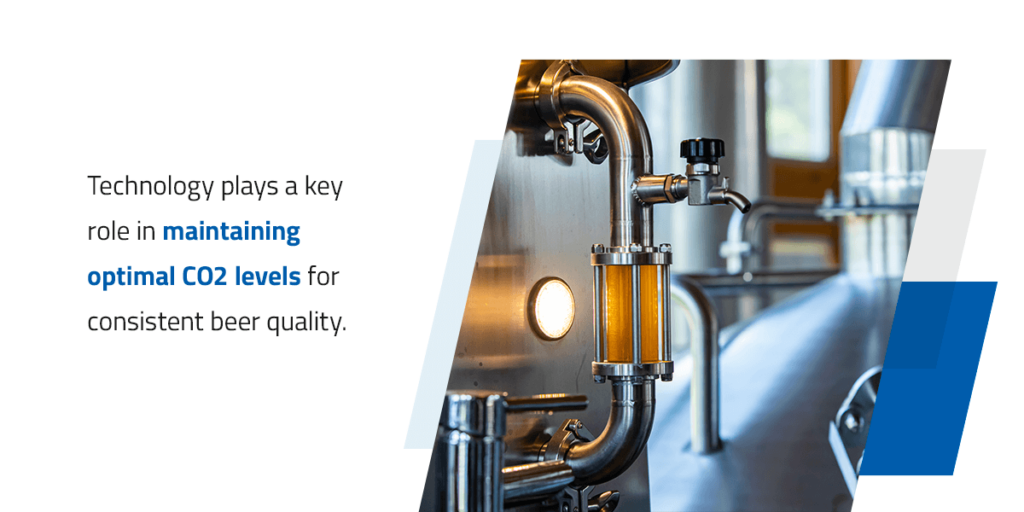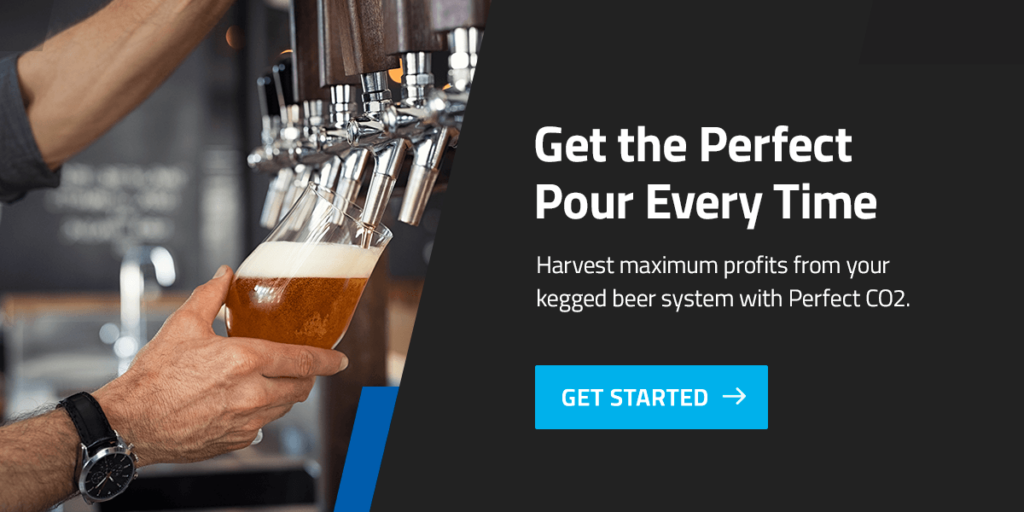

The beer-brewing process has been around since the civilization of Mesopotamia, and records suggest they brewed fermented beverages with honey and dates. Today, there are hundreds of different varieties of beer with a wide range of tastes and appearances. However, a few things remain consistent if you want to brew the perfect beer — one of them is the importance of carbon dioxide (CO2).
Carbon dioxide is a natural by-product of the beer brewing process. During the fermentation stage, yeast breaks down the sugars from the beer wort into alcohol and CO2. The result is carbonation, which produces the bubbles and foam, or head, at the top of a poured beer.
Different beers have different amounts of carbonation. For example, American-style lagers tend to have very high carbonation levels, whereas certain barleywines or stouts have lower CO2 levels.
Carbon dioxide levels impact the beer’s:
During packaging, many breweries add additional CO2 to reach the correct carbonation levels for the type of beer. They can do this through secondary fermentation or by introducing additional gas.
If the end result of fermentation does not reach the peak carbonation for that type of beer, it will undergo a secondary fermentation, or refermentation process. By adding a small amount of sugar — called “priming sugar” or “primings” — another small fermentation occurs and creates additional carbon dioxide. This method is mostly used by home brewers and smaller brewing operations through a process called bottle conditioning.
Commercial beer production methods introduce CO2 gas rather than relying on secondary fermentation. This carbonation technique works because it allows for faster processing, more control and consistent results. With the right equipment and monitoring tools, you can achieve precise carbonation levels so every sip of beer — whether from a can, bottle or keg — has the exact right level of CO2.
There are a few ways you can inject CO2 into beer. In-line carbonation refers to the injection of CO2 into flat beer as it’s being poured into a vessel — often the bright tank. Some gas injection methods combine nitrogen (N2) with CO2, or use N2 on its own. Guinness Draught is likely the most popular example of a nitrogenated beer — the smaller bubbles produced by N2 allow for the thicker, silkier mouthfeel of many stout beers.
Bulk CO2 systems have enormous benefits for commercial breweries looking to keep up with production and expand their market reach. Technology plays a key role in maintaining optimal CO2 levels for consistent beer quality, and Perfect CO2 supports large-scale operations with robust beverage carbonation solutions.
Contact a Partner Near You for CO2
Draught systems must also maintain the brewer’s precise carbonation levels. Dispensing systems use CO2 to help move the beer from the keg out of the tap — using air compressors introduces too much oxygen to the beer, significantly impacting its taste and quality. The best solution for draught systems is a nitrogen separator to produce the ideal mix of gasses for dispensing beer.
The benefits of a nitrogen separator include:
Achieving the perfect pint comes down to how you leverage your equipment to get the best results. To keep your brewery profitable, you must have the right mix of gasses in your dispensing system. A Gas Expert can help you calculate the gas mix and temperature conditions for your beer dispensing system.
These are some of the most frequently asked questions concerning beer carbonation:
To maximize your kegged beer profits and to provide the best customer satisfaction, a 16 oz pint glass should have a 3/4-inch head. The head on a pint of beer increases aroma and provides a nice mouth feel for greater customer satisfaction. The head on a pint also saves approximately 1.5 oz of beer on each pint poured. A perfect pint equals maximum profit!
As a general rule of thumb, beer kegs should be stored at a consistent 38 degrees Fahrenheit. If warmer or colder beer dispense is desired, please contact one of our Beverage Dispense experts to advise you on how to accomplish this without causing flat or foamy beer. In most cases, mixed gas from Nitrogen Separators can help compensate for temperatures outside the normal range.
All recognized beer institutions agree that draught beer lines should be cleaned every two weeks. Proper beer line cleaning is essential for maintaining fresh and correct-tasting draught beer. Improper cleaning frequency and/or cleaning methods can increase beer foam and will make it difficult to achieve the Perfect Pour. As your beverage gas supply partner, Perfect CO2 Beverage Carbonation can assist you in finding reputable beer line cleaning companies in your local area.
Absolutely! The correct gas mix and gas pressures will dictate the profitability of your draught beer system. Improper gas types or mixes and incorrect gas pressures will cause undesirable outcomes, including over-carbonation, foamy beer, flat beer and general customer dissatisfaction. Contact one of our Beverage Gas Experts to find out what gas and pressure is perfect for your establishment.
While 25% CO2 is perfect for your stout creamed beers, it is absolutely not acceptable for any normal ale or lager type of beer. The result will be under carbonated or flat beer.
The perfect ratio of CO2 to nitrogen is customized for your exact draught beer system. Typically, 60%-80% CO2 will be the range for most long-drawn beer keg systems. Each beer system has its own ideal mix ratio to deliver the perfect pint. Our Gas Experts can calculate your ideal gas mix and assist you in how to increase your draught beer system profits.
Simple! Nitrogen Separators provide perfectly carbonated beer and wine for greater beverage profits. Separators also offer a much less carbon-intensive means to deliver nitrogen for beer and wine dispensing systems. Separators provide hands-free operation and customized gas blends for all types of keg dispense systems. Perfect Pints equal maximum profit!
A nitrogen separator will provide the perfect gas mix for the perfect pint. Harvest maximum profits from your kegged beer system with Perfect CO2.
